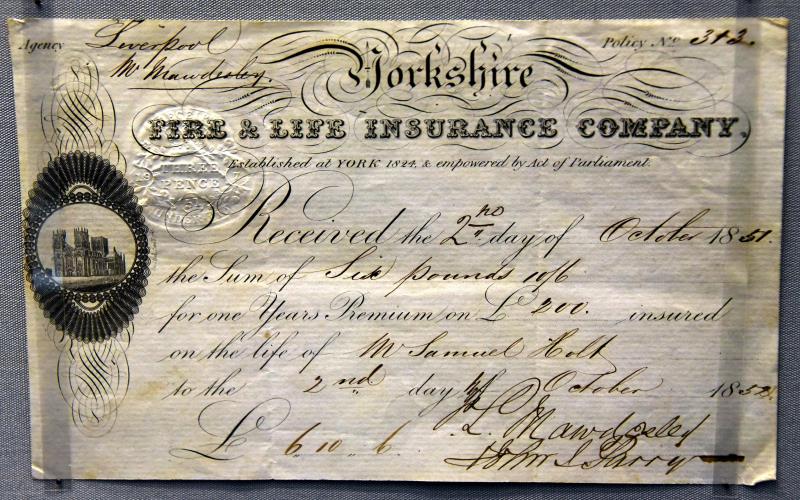Introduction: Decoding the Dynamics of Whole Life Insurance
Embarking on the journey of understanding life insurance intricacies becomes less daunting when focusing on a comprehensive policy like whole life insurance. This guide aims to illuminate the workings and advantages of a whole life insurance policy, steering clear of brand-specific intricacies.
The Essence of Whole Life Insurance
Whole life insurance stands as a distinctive and enduring financial instrument that extends coverage throughout one’s lifetime. Apart from a death benefit, it has a cash component that grows over time. Having understood whole life insurance meaning, let’s delve into its fundamental components:
Lifelong Security
Unlike term insurance, which confines coverage to a specific duration, whole life insurance guarantees protection for the entire lifespan. The policy persists as long as premiums are consistently paid, only concluding upon the insured’s demise.
Cash Value Dynamics
A defining characteristic of whole life insurance lies in the accumulation of cash value over time. A portion of each premium contributes to a tax-deferred cash account, accessible or usable as collateral during the policyholder’s lifetime.
Premium Framework and the Growth of Cash Value
Grasping the correlation between premiums, cash value, and eventual payouts is pivotal. Consider the following aspects:
Stability through Fixed Premiums
Whole life insurance typically features fixed premiums, offering financial planning stability and predictability. These premiums are determined at policy inception and remain unchanged throughout the policy’s lifespan.
Gradual Cash Value Expansion
The cash value within the policy grows over time, driven by a guaranteed interest rate. This conservative growth strategy ensures a steady and predictable increase in the cash value component.
Delving into Death Benefits and Beneficiary Dynamics
The primary objective of a life insurance policy is to furnish a death benefit to beneficiaries. Crucial considerations involve:
Tax-Free Financial Support
The death benefit provided to beneficiaries is generally tax-free, serving as a substantial financial cushion during challenging times.
Flexible Beneficiary Designation
Whole life insurance allows flexibility in designating beneficiaries. Regularly reviewing and updating these designations ensures alignment with current wishes.
Exploring Policy Loans and Withdrawals
The cash value feature opens avenues for policyholders to access funds when necessary. Explore the following facets:
Policy Loans: A Valuable Resource
Policyholders can borrow against the cash value, utilising the policy as collateral. These loans typically feature low interest rates, offering a valuable source of funds for diverse financial needs.
Strategic Withdrawals
Partial withdrawals from the cash value are also feasible. However, it’s imperative to consider the impact on the overall policy performance and death benefit.
Dividends and Active Policy Participation
Certain whole life insurance policies introduce the potential for dividends, fostering a participatory element for policyholders:
Dividend Payouts
Mutual insurance companies may distribute dividends to policyholders based on financial performance. These dividends can be received as cash, reinvested, or utilised to cover premiums.
Engaging in Policy Governance
Policyholders often have the option to participate in insurance company governance, exercising voting rights and influencing company policies.
Tax Advantages Integral to Whole Life Insurance
Comprehending the tax benefits associated with whole life insurance is indispensable for holistic financial planning. Consider the following:
Tax-Deferred Growth
The cash value within the policy grows tax-deferred, enabling potential accumulation over the years without immediate tax implications.
Tax-Free Legacy
The death benefit paid to beneficiaries is generally exempt from income tax, presenting a valuable financial legacy.
Whole Life Insurance vs. Term Life Insurance: A Comparative Insight
Drawing parallels between whole life insurance and term life insurance facilitates informed decision-making:
Duration Disparity
Whole life insurance spans a lifetime, while term life insurance restricts coverage to a specified term.
Incorporation of Cash Value
Whole life insurance includes a cash value component, a feature absent in most term life policies.
Premium Dynamics
Whole life insurance entails higher premiums due to lifelong coverage and the cash value component. Conversely, term life insurance typically features lower premiums but offers coverage for a specific term.
Influential Factors in Whole Life Insurance Decisions
Before committing to a whole life insurance policy, consider these influential factors:
Financial Objectives Assessment
Evaluate long-term financial goals, encompassing family provision, additional income streams, or building a cash reserve for future needs.
Gauging Risk Tolerance
Understand your risk tolerance and assess whether the conservative nature of a whole life policy aligns with your financial inclinations.
Exploring Investment Alternatives
Delve into alternative investment options, comparing potential returns and risks against the cash value growth offered by a whole life policy.
Conclusion: Empowering Informed Financial Futures
In conclusion, a whole life insurance policy emerges as a robust and enduring solution for lifelong financial protection. By comprehending its mechanics, premium structure, cash value growth, death benefit considerations, policy loans, dividends, and tax advantages, individuals empower themselves to make informed decisions about their financial future. Remember, opting for whole life insurance requires careful consideration and periodic review to ensure alignment with evolving financial goals. So, start early, explore your options, and embark on a journey of financial security and peace of mind for yourself and your loved ones.

